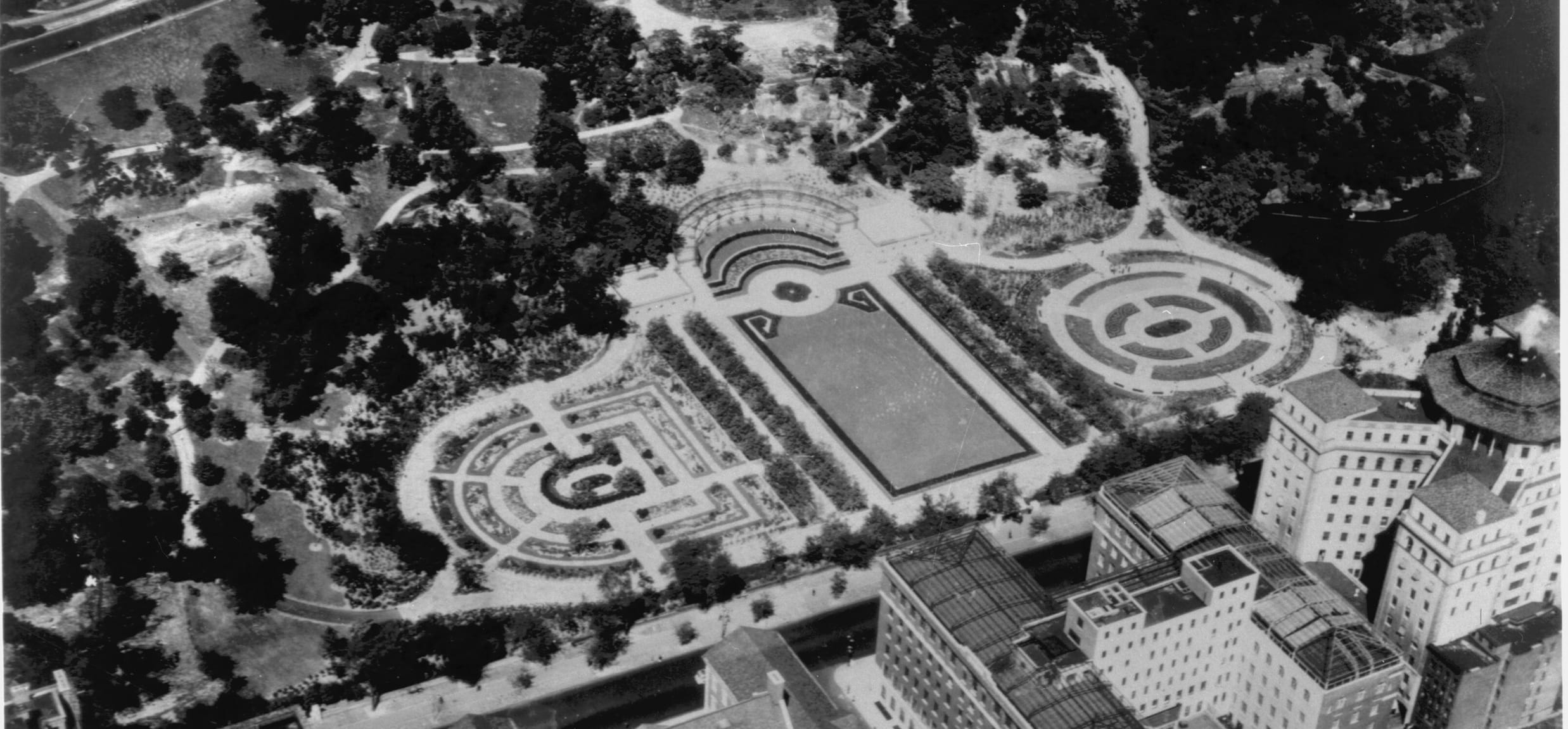UNEARTHING THE HISTORY OF THE GARDEN’S CRABAPPLES

The Conservatory Garden’s crabapple allées are among its most well-known features. Visitors have long appreciated their unique architectural quality and striking spring blossoms. In 2022, the Central Park Conservancy began a comprehensive restoration of the Conservatory Garden, which will include the replacement of the current crabapple trees in the fall of 2023.
Having recognized the decline of the existing trees, the Conservancy’s team of experts have been planning for their replacement for many years. In the process, we have uncovered the history of the allées to inform the new tree selection.



The Conservancy team’s extensive crabapple research included an Outpost Nursery catalog from the 1930s, a 32-page 2003 NYC Parks department report by Fiona Watt called Painting with Crabapples, and various New York Times articles dating as far back as 1937.
Prior to this project, the Conservancy lacked a comprehensive history of the allées, so the team embarked on a rigorous research project to discover the trees’ history. In our research, it was confirmed that the original plantings, completed by Outpost Nursery in 1937, were a crabapple variety called hyslop. The plantings consisted of the same variety of trees, ranging from 24 to 30 feet in height when they were first planted.
“When spring reaches the garden in April its sixty crabapple trees, fruiting hyslops, will be transformed into huge bouquets of shell-pink blooms,” The New York Times announced in 1937. “Most fragrant of the crabapple family, the hyslop changes its pink flowers to snow white after a few days.”
The blossoms of the incoming new trees share the same color pattern as that of the original hyslop variety. Much like the existing and incoming varieties of crabapples, the trees also had low branches and multi-stem forms, possessing a distinct sculptural and architectural quality that, when lined up in opposing rows, created an intimate interior feeling along the path of the allées. However, the first crabapples did not last long and were replaced about two decades later.
The second planting of the allées—the crabapples that will soon be replaced—consists of two different crabapple varieties arranged into four rows: a variety that blooms white along each interior row and one that blooms pink along each exterior row. The white-flowering variety are known to be Malus floribunda, or commonly the “Japanese flowering crabapple,” while the pink variety has remained a mystery to us and many experts. Since the onset of planning for this restoration project, the Conservancy’s team has gone to great lengths to identify the tree to no avail, and its production appears to have long been phased out of existence entirely.
“Many of the crabapple varieties that existed in the 1930s—and in the ’50s and ’60s when the replanting was done—no longer exist in the nursery trade,” arborist Paul Cowie explains. When a certain tree variety falls out of favor for being too susceptible to disease or any number of other reasons, tree nurseries can no longer sell them and stop growing them. In addition to a desire for better disease resistance, the pink variety’s obsolescence prevented the Conservancy from simply “replacing” the existing crabapple trees.
“Malus floribunda is relatively common. But it gets infected severely by apple scab and cedar apple rust disease, so it wasn’t considered ideal,” Paul continues. “There are new pink varieties of crabapple that have been developed since the last planting in the allées, but we could not come up with a pink-flowered variety that had the structural qualities that we wanted, including overall size.”
In the search for new trees, the Conservancy carefully considered the history of the allées. After extensive research, planning, and selection, we selected a crabapple cultivar that fits all the historically important aesthetic qualities and are importantly more disease resistant than previous varieties. The incoming redbud crabapple trees mirror the previous trees’ size, bloom color, and sculptural form. The replacement aligns with the original design intent of the Conservatory Garden—ensuring future generations of Park visitors may enjoy beautiful, healthy trees for years to come.
You can read more about the new crabapple trees and the Conservancy’s rigorous selection process on our magazine.